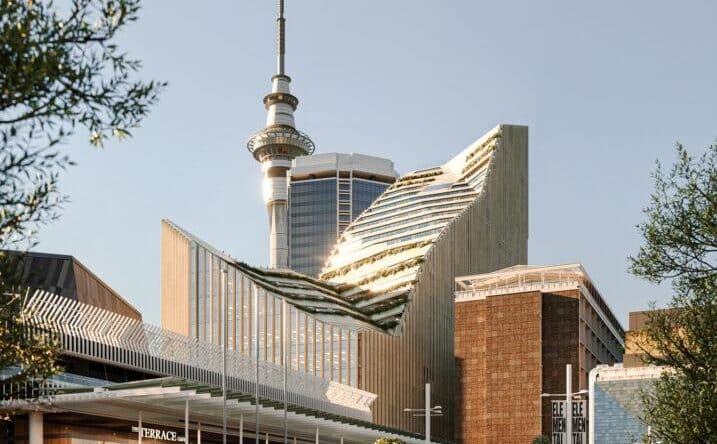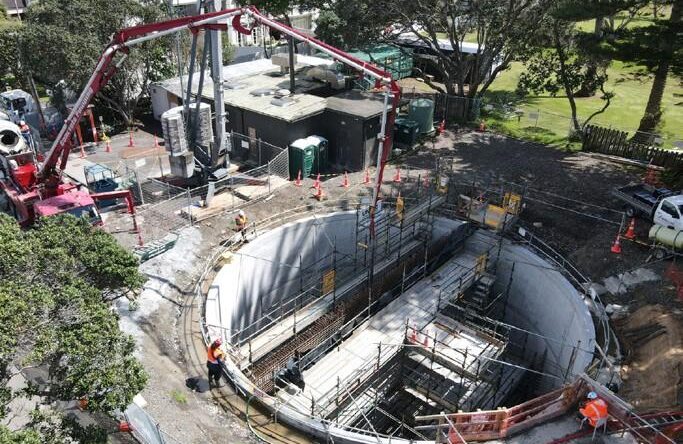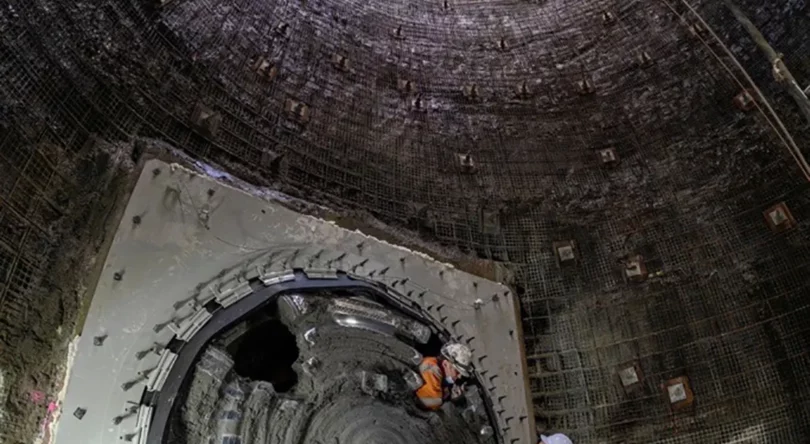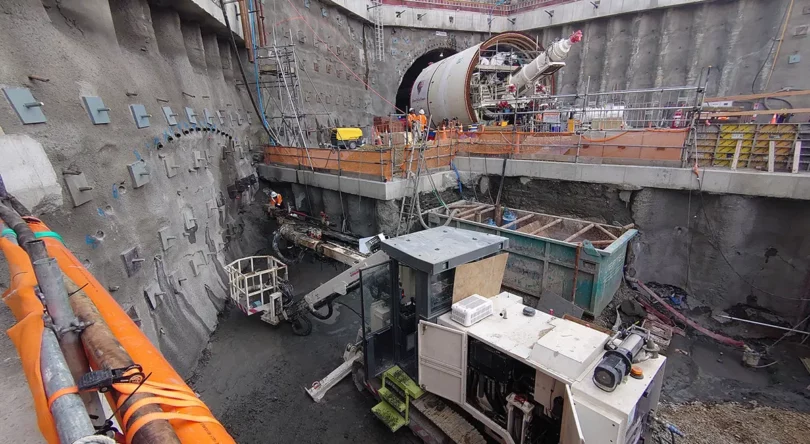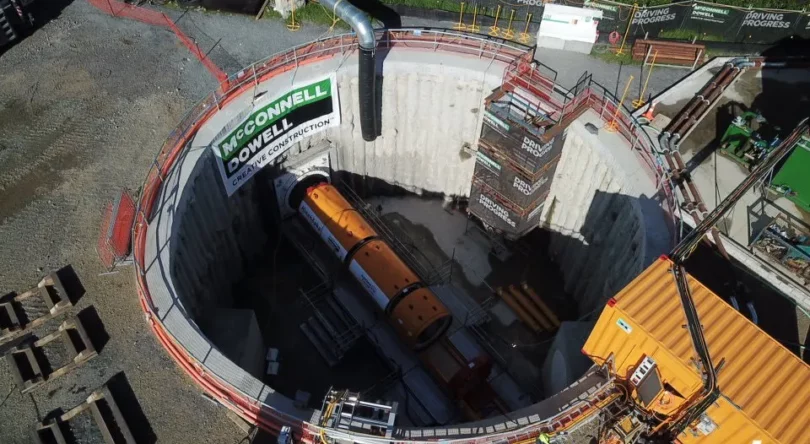The design of deep basements and complex foundations requires experience and careful judgement to achieve the right balance between safety, functionality, and efficiency. Surrounding structures need to be fully assessed to minimise any potential risks. Our team of experienced engineers carefully develop comprehensive ground models which fully characterise the engineering properties of the ground. This allows us to confidently use more advanced analytical tools – resulting in safer and more efficient outcomes for Clients when compared to the traditional approach of applying classical soil theory to such issues.
This approach was powerfully demonstrated by our team recently in the analysis of a deep basement in Central Auckland for a major (2,200m2 up to 14m deep) development. Our analyses resulted in a substantial reduction in the temporary propping required to safely undertake the excavation. In addition, our advanced 3D finite element models allowed for a more realistic distribution of stresses where ground levels changed. This optimised the structural member sizes and removed the requirement for iterative soil and structure interaction analyses.
we have successfully delivered deep basement / foundation solutions on the following projects
- Glendowie Branch Sewer Upgrade, Auckland – Innovative design of 8no MTBM launch and retrieval shafts up to 18m deep using a combination of deep soil mixing, jet grouting and unreinforced secant piles. Scope included design of ground retention for 20m diameter and 18m deep main pump station.
- St Marys Bay to Masefield Beach Water Quality Improvement, Auckland – Design of main MTBM launch shaft and ground retention for the main pump station and highly efficient 18m deep, ‘belled’ retrieval shaft in Weathered Rock.
- Lawson’s Creek Branch Sewer, Auckland – Economic design for seven temporary launch and retrieval shafts up to 12m deep using a combination of drilled shafts (up to 3.6m diameter), sheet piles and conventional pile and timber lagging. Elements used in temporary works were up to 90% recoverable.
- Auckland Central Interceptor – Geotechnical peer reviewers on 12.4km long tunnel sewer through Auckland. Alignment up to 110m deep with maximum shaft depth up to 86m. Input into value engineering and detailed design of additional complex confluence and auxiliary structures through a wide variety of ground conditions.
- Mairangi Bay Pump Station, Auckland – Geotechnical design of 16m diameter 12m deep underground pump station. The design involved 3D finite element analysis to cover soil and structure interaction for all structural design cases. The analysis resulted in significant design optimisation and reduction in carbon.
- North Harbour 2 Watermain, Auckland – Design of two generally unreinforced secants piled MTBM launching and retrieval shafts up to 12m deep. The innovative design allowed for the gantry crane to span across open shafts thus removing the requirement for onsite service crane and greatly increasing productivity and safety.
- Ports of Auckland Underpass – Design of support of excavation work for Stormwater Sea Outfall pipe. Excavation up to 20m in highly variable reclamation fill with significant groundwater ingress challenges.
key personnel
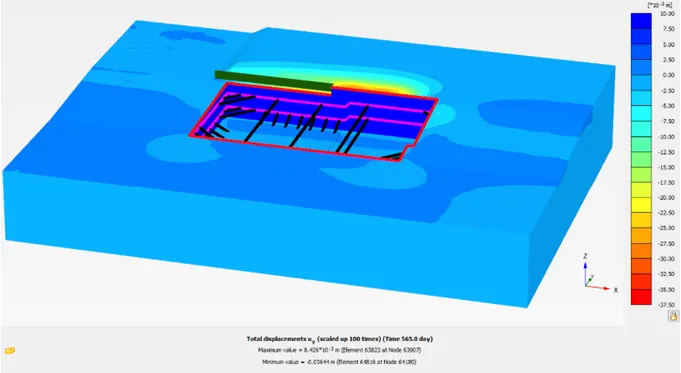
3D Plaxis model for soil/structure interaction of deep basement
related projects
Mairangi Bay Pump Station
The existing Mairangi Bay pump station could no longer cater for the new development in the area and was overflowing onto nearby beaches.
St Marys Bay to Masefield Beach Water Quality Improvement
challenging urban tunnelling project





